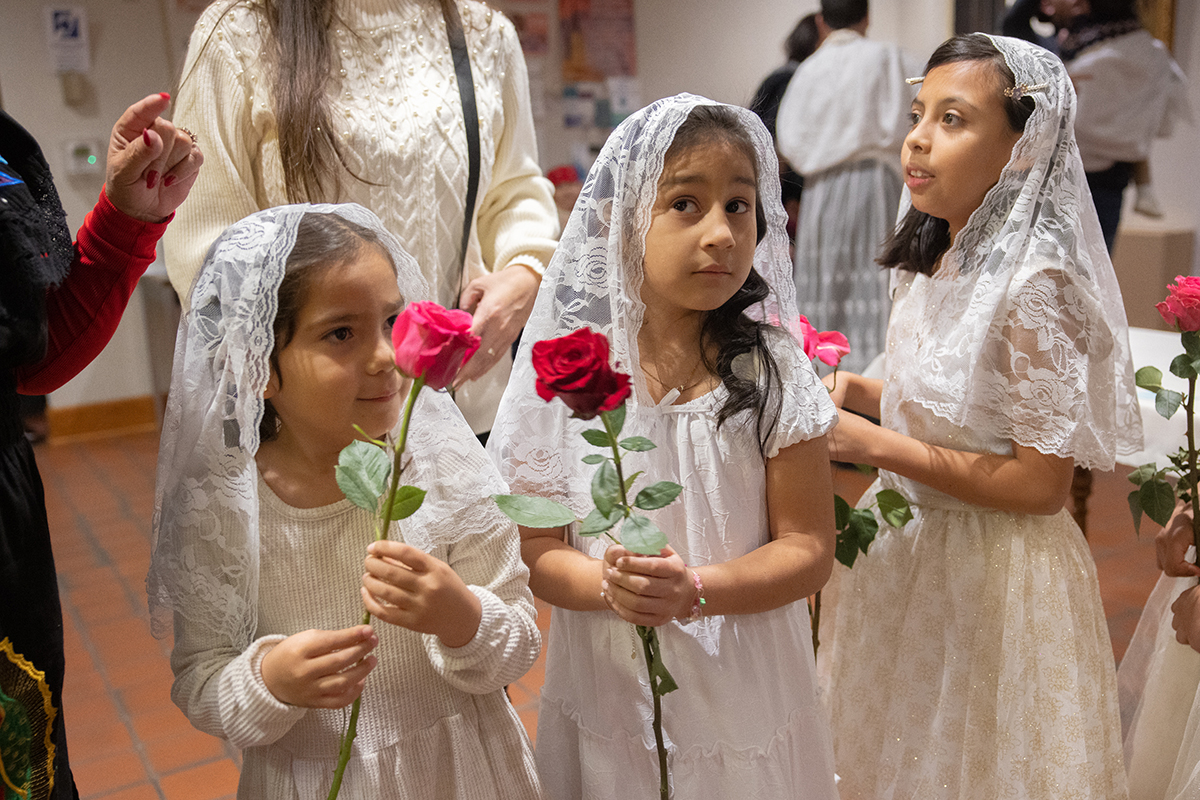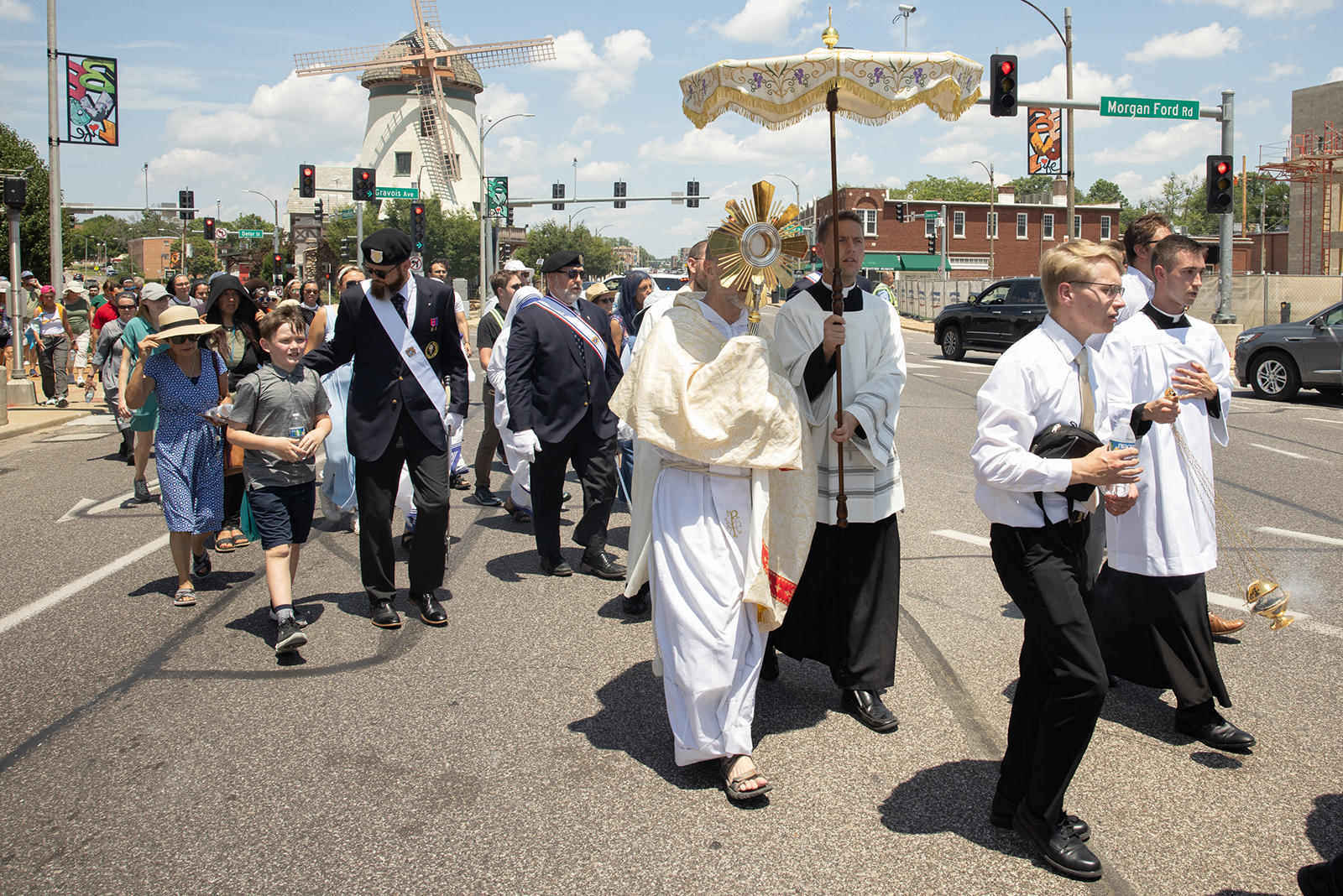Interactive zoology class brings a love of science

St. Mary’s High School teacher introduces students to the diverse animal kingdom

Lynn Hardesty quizzed St. Mary’s High School students Erick Walker and Kaleb Smith as they prepared to dissect a perch: “Which is the dorsal side of the fish?”
“We have two dorsal fins,” Hardesty explained. “Then, which is the anterior and posterior?”
As other students cut a flap in the fish body with surgical-type tools, she pointed out the liver, esophagus, heart, spleen, intestines and other organs. The objective was to perform a dissection properly with respect; gain an understanding of chordate fish anatomy and adaptations; and name, describe and identify various organs found in the perch.
Hardesty teaches anatomy, zoology and four biology classes at St. Mary’s, including one with honors students.

She proposed the course in zoology, including dissections, because it introduces students to the diverse animal kingdom with a survey of invertebrate and vertebrate animals.
Another semester course, anatomy, also involves some dissections. It covers the organization and function of all major body systems and their importance in everyday activities.
The dissections, for example, are important for learning about skeletons and bones. In anatomy they dissect chicken bones and a bovine eyeball.
A parishioner of St. Justin Martyr in Sunset Hills, Hardesty called science and faith complementary paths to understanding life. “When you think about life on a grand scheme,” she said, “you can look at it from a scientific point — what makes things alive, what keeps things living, how do things interact.”
But there’s another side, too — what is life. “We put both out there. In this classroom we explore the biology and the science side of things. But there’s the Guiding Hand of life. Science and faith don’t have to be at odds. There’s a lot of room for faith as we learn science.”
For the courses Hardesty teaches, she said, “there’s always that aspect of looking at how miraculous life is. Look at all the diversity there is, how beautiful it is. That sparks the faith in me as well … all the parts of our body, how they are in sync together.”
Hardesty is thankful, she said, “to have the opportunity to teach the students new things. To know they’re going to open their minds and allow me to fill them with information. I feel honored when a student

chooses to take extra classes with me. I get that sense of having reached them, they enjoyed it and want more rather than felt like they had to take a science class. There’s something special about that.”
St. Mary’s has an open and welcoming feeling, with a Marianist charism of inclusion, she said.
It’s a second career for Hardesty. She earned a bachelor’s degree in fisheries and wildlife from the University of Missouri-Columbia, then went to work as a herbarium assistant at the Missouri Botanical Gardens before staying home to care for her children.
Hardesty finished a master’s degree in teaching, certified in high school biology, in December 2019 from the University of Missouri-St. Louis, then did substitute teaching until March 2020 when classes went virtual. “Last year was my first year. An interesting year to begin,” she said.
Teaching isn’t new to her. She’s taught dance since she was 15 and was a teaching and science lab assistant as an undergrad student. “I always had a love for it,” she said.
Alex Kurkowski, a junior, called the zoology class fun and interactive, much better than sitting at a desk. Hardesty “makes it interesting. She helps us to the best of her ability,” he said.
Another junior, Adrion Atkinson, said that “every class we learn about a different animal, some I hadn’t heard of before.”
>> Science courses at St. Mary’s

Underlying the Science Department’s philosophy, as a part of the overall Christian environment, is the acceptance of the beauty and order of God’s creation. The department stresses the special place of humanity in the universe and humanity’s ability to appreciate, preserve, use and/or alter the forces and products of our natural environment.
The department strives to develop the individual student’s ability to think critically and efficiently. As science is an active process of discovery, the courses contain a balance of lecture and laboratory work. It is believed that only through participation will science become an active part of the educational process.
Besides helping students prepare to cope with technology, the science program seeks to stimulate enthusiasm among those students considering careers in science, engineering, medicine, etc.
Valerie Todd, principal of St. Mary’s, said the school is offering real-world electives for students to match their interests and possible careers, so they have an idea of what to pursue after high school.
In science classes, the school sometimes has religion teachers talk about the relationship between science and faith. “Sometimes people think science is in opposition with faith. But when you see the beauty of the earth and the precision in science, I don’t see how you can not think that God has a hand in that. Bringing that to our students is so important,” Todd said.
Hardesty Lynn Hardesty quizzed St. Mary’s High School students Erick Walker and Kaleb Smith as they prepared to dissect a perch: “Which is the dorsal side of the fish?” “We … Interactive zoology class brings a love of science
Subscribe to Read All St. Louis Review Stories
All readers receive 5 stories to read free per month. After that, readers will need to be logged in.
If you are currently receive the St. Louis Review at your home or office, please send your name and address (and subscriber id if you know it) to subscriptions@stlouisreview.com to get your login information.
If you are not currently a subscriber to the St. Louis Review, please contact subscriptions@stlouisreview.com for information on how to subscribe.





